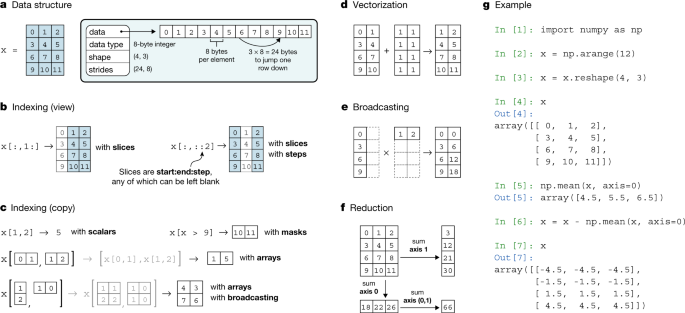

I did not see the answer of SethMMorton to the related question That explains why offers some additional features over. If you are doing scientific computing with python, you should

Versions of the linear algebra modules, as well as many other numericalĪlgorithms. In any case, SciPy contains more fully-featured

NumPy contains some linear algebra functions, even though these more Tries to retain all features supported by either of its predecessors. However, one of NumPy’s important goals is compatibility, so NumPy The most basic operations: indexing, sorting, reshaping, basicĮlementwise functions, et cetera. In an ideal world, NumPy would contain nothing but the array data type and Only be in SciPy: What is the difference between NumPy and SciPy? It seems from the SciPy FAQ that some functions from NumPy are here for historical reasons while it should The underlying design reason why it is done like that is probably buried in a mailing list post somewhere. That explains the behavior you are seeing. It seems that module overlays the base numpy ufuncs for sqrt, log, log2, logn, log10, power, arccos, arcsin, and arctanh. See their respective docstrings for specific examples. Similarly, sqrt(), other base logarithms, power() and trig functions areĬorrectly handled. Module provide the mathematically valid answers in the complex plane: Whose output data-type is different than the input data-type in certainįor example, for functions like log() with branch cuts, the versions in this Wrapper functions to more user-friendly calling of certain math functions The log10 function you get in scipy comes from. Looking in the scipy _init_ method I see this: # Import numpy symbols to scipy name space Why scipy is preferring the library function over the ufunc, I don't know off the top of my head.ĮDIT: In fact, I can answer the log10 question. One is a ufunc, the other is a numpy.lib function. The log10 behavior you are describing is interesting, because both versions are coming from numpy. So that the whole numpy namespace is included into scipy when the scipy module is imported. Last time I checked it, the scipy _init_ method executes a from numpy import * Tested using NumPy 1.5.1 and SciPy 0.9.0rc2. numpy.min, numpy.max, numpy.abs and a few others have no counterparts in the scipy namespace. Why the apparent duplication? If this is meant to be a wholesale import of numpy into the scipy namespace, why the subtle differences in behaviour and the missing functions? Is there some overarching logic that would help clear up the confusion? They're similar, but the latter offers some additional features over the former. This is also true of scipy.log1p and numpy.log1p.Īnother example is vs. On the other hand, numpy.exp and scipy.exp appear to be different names for the same ufunc. The same can be said about log, log2 and logn, but not about log1p. scipy.log10 returns complex values for negative arguments and doesn't appear to be a ufunc.numpy.log10 is a ufunc that returns NaNs for negative arguments.To give an example that came up recently: Most of the time, the two appear to be exactly the same, oftentimes even pointing to the same function object. In other words, if there's a function named numpy.foo, there's almost certainly a scipy.foo. SciPy appears to provide most (but not all ) of NumPy's functions in its own namespace.


 0 kommentar(er)
0 kommentar(er)
